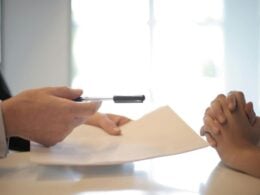This article has been updated April 23, 2020 to include additional funding approved by Congress.
Small business owners impacted by the coronavirus crisis may want to consider an SBA Economic Injury Disaster Loan. These loans are attractive for several reasons, including:
- Low fixed interest rates: 3.75 percent or 2.75 percent for non-profits
- Long-term repayment of up to 30 years
- No prepayment penalties
- Payments deferred (interest accrues)
Here are answers to some common questions from small business owners about Economic Injury Disaster Loans (EIDLs). Note, we have gathered this information from a variety of SBA sources and strive to provide helpful guidance, but do not rely on this as definitive answers to your questions.
On April 23, 2020, Congress approved an additional $50 billion for EIDL loans and $10 billion for EIDL grants. It is unclear, however, whether the SBA will reopen the application portal for new EIDL applications or will simply process existing applications. We will update this article as additional information becomes available.
In addition, Congress approved $310 billion in funding for Paycheck Protection Program (PPP) loans. This article discusses EIDL loans which you obtain from the SBA. However, you may also want to apply for PPP.
In addition to the Disaster Loan, we encourage you to check out other resources including:
- State assistance programs
- SBA 7(a) loans through the stimulus program
- Non-government loans and financing
StartupNation exclusive discounts and savings on Dell products and accessories: Learn more here
Who are these loans for?
- You must be a small business cooperative, ESOP or tribal business with 500 or fewer employees
- An individual who operates as a sole proprietorship, with or without employees, or as an independent contractor; or
- A private non-profit or small agricultural cooperative
- Your business must be directly affected by COVID-19
Are they available in my state?
All states and U.S. territories are now eligible to apply.
How much can I ask for?
The maximum loan amount is $2 million. Note that you will not ask for a specific loan amount on the application. The SBA will determine the loan amount for which you qualify based on the information on your application.
How does the SBA decide how much I get?
The SBA will calculate economic injury according to a couple of different formulas spelled out in Disaster Loan Standard Operating Procedures. According to the SBA, “economic injury” is defined as:
[A] change in the financial condition of a small business concern, small agricultural cooperative, small aquaculture enterprise, or PNP of any size (excluding religious organizations) attributable to the effect of a specific disaster, resulting in the inability of the concern to meet its obligations as they mature, or to pay ordinary and necessary operating expenses. Economic injury may be reduced working capital, increased expenses, cash shortage due to frozen inventory or receivables, accelerated debt, etc.
How do I get the $10,000 dollar grant?
The CARES Act signed by the President on March 27, 2020 now includes a $10,000 emergency grant to be made within three days of application. The online form will now ask you for your bank account information to deposit those funds.
These grants may be used for:
- Providing paid sick leave to employees unable to work due to the direct effect of the COVID–19;
- Maintaining payroll to retain employees during business disruptions or substantial slowdowns;
- Meeting increased costs to obtain materials unavailable from the applicant’s original source due to interrupted supply chains;
- Making rent or mortgage payments; and
- Repaying obligations that cannot be met due to revenue losses.
These grants do not have to be repaid. If you get an SBA 7(a) loan under the Payment Protection Act and are eligible for loan forgiveness, this grant will reduce the amount eligible for forgiveness.
How long do I have to be in business?
The time in business requirement has been waived. However, the business must be in operation by the date of the declared disaster. For COVID-19-related claims, that means before January 31, 2020.
Do I have to have employees?
No. Business owners without employees may be eligible.
Are home-based businesses eligible to apply?
Yes. Being a home-based business does not disqualify you. However you must list a U.S. address on your application. If you normally use a PO Box for business correspondence, make sure to list your physical home address.
How can I use the money?
These working capital loans may be used to pay fixed debts, payroll, accounts payable and other bills that could have been paid had the disaster not occurred. The loans are not intended to replace lost sales or profits or for expansion. Funds cannot be used to pay down long-term debt.
Can I use this to consolidate debt?
These loans cannot be used to refinance long term debt.
What If I just want the grant?
You do not have to accept the loan. You can accept the grant and decline the loan.
If I have access to a line of credit elsewhere, can I apply?
Yes you can still apply. You can use that funding while you wait for disaster assistance. In fact, if you have access to another source of borrowed capital to bridge the gap between your application with the SBA and when funds are dispersed, we would recommend that.
What is the credit score requirement?
There is no minimum credit score required, however, applicants must have a credit history acceptable to SBA.
What if I don’t have great credit scores?
If you have damaged credit, apply and include an explanation with your application. Guidelines for those who process SBA Disaster Loan applications state:
“For disaster lending purposes, satisfactory credit history is defined as a history that generally shows payments to creditors as agreed unless otherwise justified…
Generally, a history that consists of minor, isolated instances of adverse credit or late payments is acceptable. Major instances of adverse credit such as unpaid judgments, repossessions, previous foreclosures, chargeoffs, and unpaid collections can be overcome provided:
- The applicant explains the lapse; and
- The applicant has other accounts with “as agreed” payment records.
For purposes of evaluating adverse information found on an applicant’s (credit reports), the information should be considered within the totality of circumstances; for example, financial difficulties caused by one-time situations such as divorce, job loss, serious medical illness, etc.
For purposes of disaster lending, medical collections are not considered adverse information.
Non-medical collections or charged off accounts with an aggregate of $10,000 or less and foreclosures or deed-in lieu of foreclosures which occurred more than two years from the date of the loan application are all considered an acceptable credit risk and do not require any additional justification.”
However, it does also state that loans cannot be recommended for approval if the credit history is unsatisfactory so there is no guarantee that it won’t result in a denial.
What if I have been through bankruptcy?
Prior bankruptcy is not an automatic reason for denial. A previous Chapter 7 bankruptcy may be acceptable, especially if it is older, but even recent bankruptcy (within the past two years) may be acceptable if it was due to circumstances beyond the applicant’s control and he or she has maintained a positive credit history since.
Applicants currently in Chapter 11 bankruptcy may be eligible if payment history is satisfactory, though written permission from the Bankruptcy Trustee will have to be obtained. Businesses in Chapter 11 bankruptcy may or may not be eligible; it may still be worthwhile to apply.
Will my business credit be checked?
The SBA requires a business credit check from Dun & Bradstreet or a similar commercial credit agency for approved loan amounts of $200,000 or more, unless your business is a sole proprietorship.
What credit problems will disqualify me?
In addition to the guidelines above you may not qualify if:
- You are more than sixty (60) days delinquent on child support obligations
- You have judgements against you for federal debts and you have not worked out a satisfactory repayment plan
- You have federal tax liens of more than $10,000 (You may still qualify but you must provide a satisfactory explanation and be able to repay the tax debt. It’s recommended you work out a payment plan with the IRS as soon as possible)
What do I do if my credit is frozen?
It’s recommended that you lift any credit freeze (with all credit reporting agencies) before you apply. Make sure you have alerts set up to detect any new activity on your credit reports so you can freeze your files again once your credit has been checked.
How fast can I get funding?
The SBA’s goal is to process completed applications within 21 days but this is an unprecedented disaster of national scope and it is entirely possible the SBA will become overwhelmed with applications. In previous disasters, processing has taken as long as an average of 45 days.
Will I get the full amount right away?
The first disbursement will be up to $25,000 and there will be later disbursements.
Related: 4 Types of Interim Financing While You Wait for SBA Assistance
What if I shut down and don’t know when I will reopen?
Estimate how long you will be shut down. Note on your application how you arrived at that estimate on the application. You can also request additional funds in the future if needed.
Is there a deadline to spend the funds?
There is none specified, however, the SBA does state that these loan “proceeds can only be used for working capital necessary to carry the concern until resumption of normal operations and for expenditures necessary to alleviate the specific economic injury.” In other words, they are to be used to help the business recover from the disaster.
Do I have to be turned down by a bank first?
No. While you certainly should be looking at all financing options available, including the new SBA 7(a) loans available under the Paycheck Protection Act, you won’t have to supply credit rejection letters in order to apply. The “credit elsewhere” test the SBA normally performs has been waived for these loans.
Is there a prepayment penalty?
No. You can pay off the loan early without a penalty.
Can landlords with investment properties qualify?
Yes, you may be eligible.
Do I have to fill out all questions?
Make sure you fill out each question that has an asterisk, as those are required. If you can’t get an answer to help you fill out a specific question, just do the best you can. In addition, try to fill out all other questions if you can, as best you can. An incomplete application will likely result in delays. You can provide additional information to explain why you answered a question in a particular way.
Is a personal guarantee required?
While SBA loans normally carry a personal guarantee, they have been waived for COVID Disaster Loans, up to $200,000.
Is collateral required?
For loans over $25,000, collateral will be required if available (which can include home equity). However, the borrower will not be denied solely because there is no collateral.
What tax returns do I have to provide?
Note: The CARES Act signed by the President on March 27, 2020 allows the SBA Administrator to waive the tax return requirement for these loans.
The following is based on information available prior to the enactment of that legislation and may no longer be required. We will update this section when more guidance is available.
If a tax return is still required, you will likely have to submit IRS Form 4506-T “Tax Information Authorization” with the disaster loan application. This allows the SBA to obtain transcripts of Federal income tax returns. Tax returns are required for each principal owning 20% or more of the applicant business, each general partner or managing member, and each affiliate when any owner has more than 50 percent ownership in the affiliate business. Affiliates include business parents, subsidiaries, and/or other businesses with common ownership or management.
Note, the SBA will request three years of business tax returns from the IRS if available.
In addition you should be prepared to provide:
- 2019 business tax return if filed or your 2019 year-end profit and loss statement and balance sheet and the most recently filed business tax return
- 2020 year-to-date profit and loss statement
What do I list for the amount of physical damage?
If you are requesting a disaster loan due to COVID-19 you will not be requesting a loan for physical damage. Make sure you requested the correct type of loan: the COVID-19 Economic Injury Disaster Loan.
What is the FEMA number?
You do not have to enter a FEMA number for the EIDL. Make sure you are in the right application.
Am I eligible if I already have a disaster loan from a previous disaster?
Yes, but there is a total limit of $5 million of SBA assistance.
What if I have two businesses in different states?
Fill out an application for each business.
What happens after I apply?
Your loan application will be processed by a case manager. They may reach out to you at some point so make sure you provide a phone number you will answer and an email address you check regularly.
You will get an application number on your computer screen after you successfully complete your application online. Keep that number in a safe place in case you need to check on the status of your application. Check your spam folder frequently as well.
I applied before funds ran out. Do I apply again?
If the SBA opens the EIDL application portal again, and your application number started with a “2” you may want to apply again. That’s because you applied before the new system that allowed you to request the grant. If your application number starts with a “3” you should not have to reapply. SBA is processing applications on a first-come, first served basis.
When will I have to start making payments?
Payments will be deferred for one year. (Interest will accrue during this time).
What if I get turned down?
You have up to six months to request a reconsideration.
Sign Up: Receive the StartupNation newsletter!
The bottom line
This loan application can be confusing. If the application portal opens again, don’t let that stop you from applying. The next round of funding will likely go quickly. Here are two tips:
- You can go through the online application to see what information you’ll need before you actually apply. Just don’t submit it.
- You can ask for help. If you have questions, our best advice is that you try to get answers from SBA Disaster Assistance or an SBA resource partner such as your SBDC, Women’s Business Center or SCORE chapter. Many of these offices are hosting webinars, office hours, and other events to help answer questions. If you can’t get a specific answer, apply and just do the best you can.
We will continue to monitor this program and provide updates.
Please keep in mind this information is changing rapidly and is based on our current understanding of the programs. It can and likely will change. Although we will be monitoring and updating this as new information becomes available, please do not rely solely on this for your financial decisions. We encourage you to consult with your lawyers, CPAs and financial advisors.
This article originally appeared on Nav.com by Gerri Detweiler






